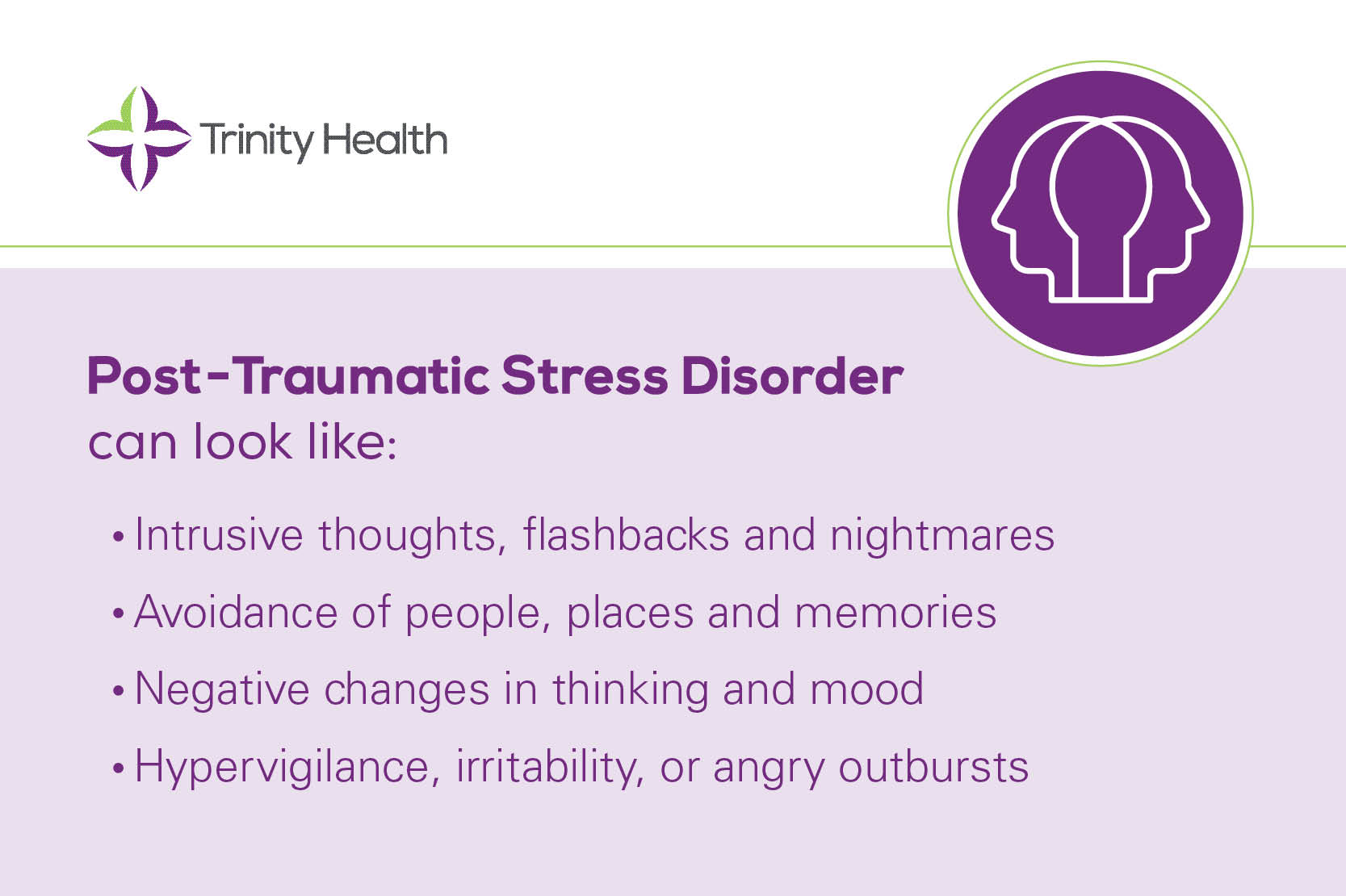Understanding PTSD: How to Recognize It in Yourself or Others
June 6, 2025
By: Justine Liang
Categories: Behavioral & Mental Health
“Trauma can leave a lasting impact, but recognizing PTSD and seeking help is the first step toward healing,” says Nicole Steffen, MSW for Trinity Health Behavioral Health services in West Michigan. Post-Traumatic Stress Disorder (PTSD) can happen after someone experiences or sees a traumatic event. This can include military combat, natural disasters, serious accidents or personal attacks. Identifying symptoms early is crucial to finding support and recovery.
The Difference Between PTSD and ASD
A common precursor is acute stress disorder (ASD). People can confuse the two, since they share a lot of the same symptoms. After a traumatic event, ASD can develop between 3 days and one month after trauma. While the two share symptoms, intrusive memories or thoughts, negative mood and avoidance, they are different.
The biggest difference is the duration. For some, ASD can turn into PTSD if symptoms continue for longer than one month. An early diagnosis for ASD can be important, because it can reduce the likelihood someone develops PTSD. Important to note, not everyone with ASD continues to develop PTSD.
What is PTSD?
PTSD occurs when the brain remains in a heightened state of stress long after the trauma has passed. This condition can disrupt daily life, relationships and overall well-being. While many people experience temporary stress reactions after a traumatic event, PTSD symptoms persist for months or even years, often requiring professional intervention.
Common Symptoms of PTSD
1. Intrusive Thoughts
Recurring, unwanted memories of the traumatic event, flashbacks or distressing nightmares may occur. These intrusive thoughts can surface with warning and trigger intense emotional reactions.
2. Avoidance
People with PTSD may avoid reminders of the trauma by steering clear of certain places, people or activities. They may also isolate themselves and withdraw from social interactions to avoid discussing the event.
3. Negative Changes in Mood and Thinking
Feelings of hopelessness, guilt or detachment from others are common. People may have trouble remembering important details of the trauma. They might also develop distorted beliefs about themselves, like feeling guilty for what happened. Emotional numbness and a lack of interest in previously enjoyed activities are also signs.
4. Increased Arousal and Reactivity
Being more irritable, difficulty sleeping and being easily startled are hallmark symptoms. Constantly feeling on edge, angry outbursts or engaging in self-destructive behaviors can further indicate PTSD.
How to Recognize PTSD
If symptoms persist for more than a month after a traumatic event, PTSD may be present. Recognizing these signs early allows for timely intervention. Treatments such as cognitive-behavioral therapy (CBT) and medication can effectively manage symptoms and enhance quality of life.
“Understanding PTSD and fostering compassionate conversations can empower individuals to seek the help they need,” said Steffen. “Support is available, and healing is possible.”
Put your mental health first. If you are struggling with PTSD, anxiety, depression or any behavioral health disorder, we can help.
This blog was medically reviewed by a Trinity Health provider.




